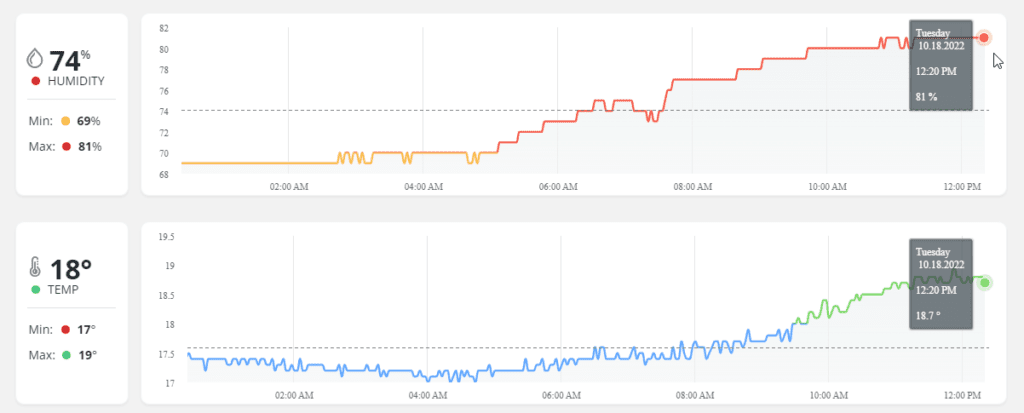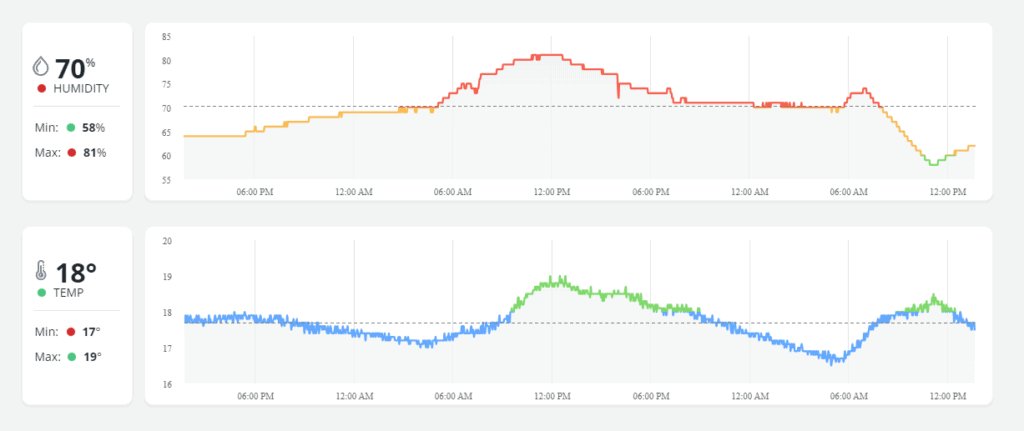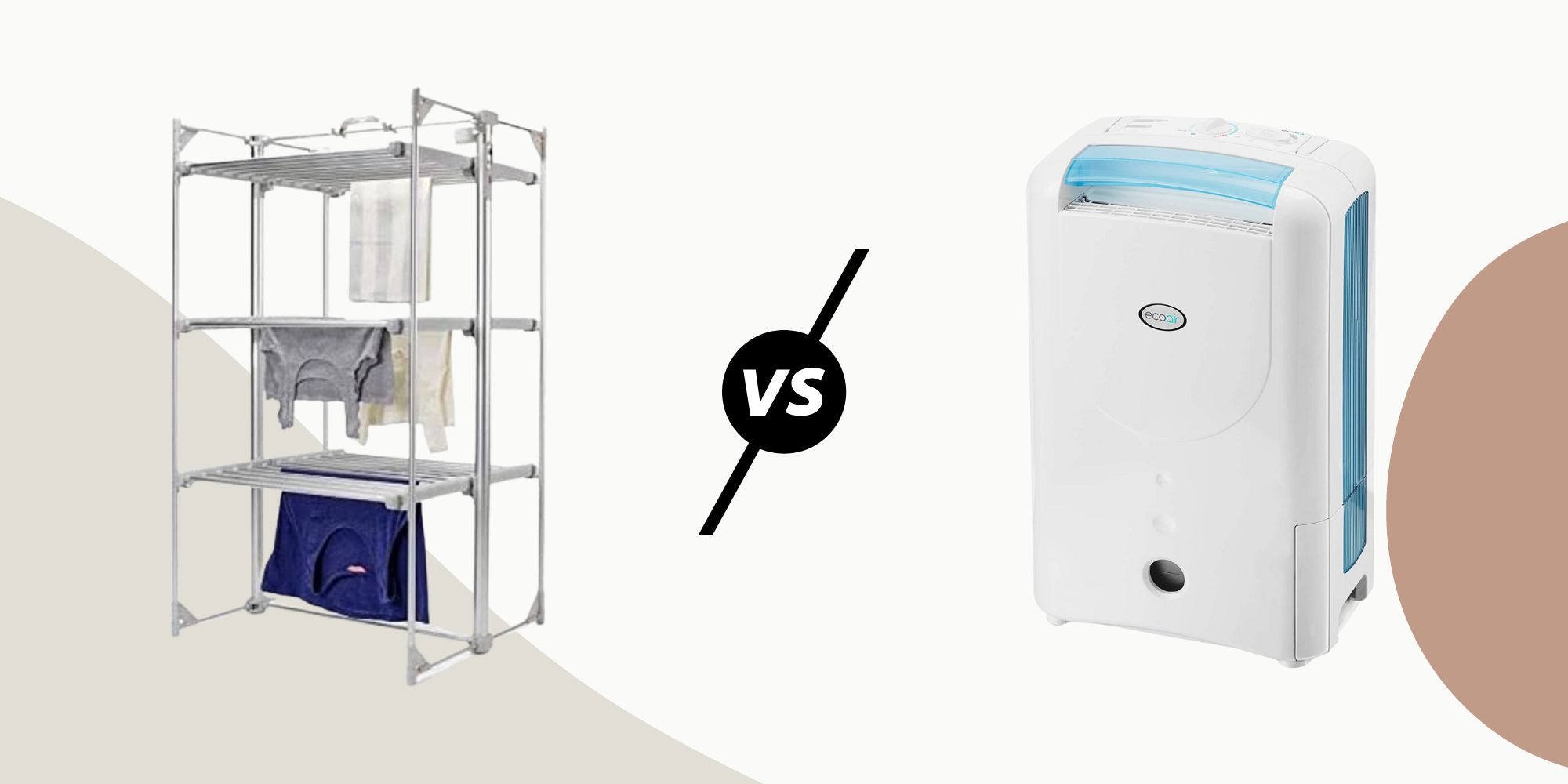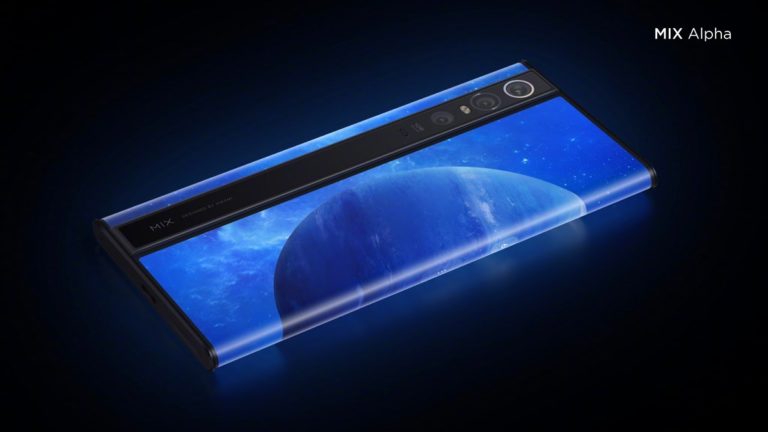Any links to online stores should be assumed to be affiliates. The company or PR agency provides all or most review samples. They have no control over my content, and I provide my honest opinion.
Continuing my obsessive posting about the cost-of-living crisis, I have been looking into the benefits of using a desiccant dehumidifier over a heated clothes rack for drying clothes.
Yesterday, I reviewed the Dry:Soon 3-Tier Heated Airer. It is about the best-heated clothes airer/rack on the market, but it is out of stock, and I am not quite as impressed with it as all the glowing reviews you see online.
A common recommendation for drying clothes is to use a desiccant dehumidifier and placing it in a small room or using a clothes rack that’s covered up with a sheet.
Desiccant Dehumidifiers vs Compressor Dehumidifiers
Desiccant dehumidifiers use quite a lot of electricity compared to compressor dehumidifiers such as the Ebac 3850e. This is because they remove water by natural absorption. They then use an electrical heater to continuously regenerate the adsorbent material (dry it out).
There are some arguments against this type of dehumidifier. Because it will continuously extract moisture, it then draws it in from outside, making them inefficient to run. It is claimed that they will remove around three times more moisture than is required for an average British home with four occupants.
However, in this scenario, they should work well.
Advantages of a Desiccant Dehumidifiers vs Heated Clothes Airer / Rack
A desiccant dehumidifier will extract water from the air and expel heat while it regenerates the adsorbent material. They can expel quite a lot of heat, so when used in a small room or under a covered rack, they can warm the surrounding air quite a lot. The amount of heat the desiccant dehumidifier is why it is advantageous over a compressor for clothes drying and room warming.
This warm, low, humidity air should, in theory, dry your clothes quite quickly.
The additional benefit is that it will lower the humidity in your home too. Whereas a clothes rack will increase the humidity. High humidity in a cold climate can lead to condensation and mould problems.
Heating Efficiency of Desiccant Dehumidifiers
One of the interesting things about desiccant dehumidifiers is that they are very efficient as a heater. With a COP (Coefficient Of Performance) of around 1.25-1.5 they are not as efficient compared to a dedicated air source heat pump, which might have a COP rating of 2.5-4. But they are more efficient than electrical heaters, which have a COP of 1. Basically, an oil radiator will give off 1kW of heat for 1kW of electricity.
Using a desiccant dehumidifier in a room for heating isn’t an ideal solution. You don’t want to bring the humidity down too low, and they will normally shut off at a certain humidity.
Drying clothes in a room to add humidity also reduces heating performance because it will draw heat from the air to evaporate moisture from the clothes.
However, they can be used to complement existing heating while also being highly efficient at heating a room and drying clothes.
Heated Clothes Rack vs Dehumidifier Electricity Running Costs & Performance
| Preview | Product | Rating | Price | |
|---|---|---|---|---|

| EcoAir DD1 Simple Blue MK3 Desiccant Dehumidifier | Rotary... |
£219.00 | Buy on Amazon | |
   | VOUNOT Large 3 Tier Clothes Airer, Laundry Drying Rack... | £29.99 | Buy on Amazon |
Finally, getting around to how well the desiccant dehumidifier performs against my Dry:Soon heated airer.
Doing a like-for-like test has been difficult, and I need more time to use them both in different scenarios. I have also placed my Airthings View Plus in the same room, so I can get a better idea over the next few weeks of how much difference both techniques make on the overall room environment.
One of the issues I have is that heated clothes racks have so-so performance. All the product photos your see has people draping the clothes around the heated pipes. With Dry:Soon, I have the fitted cover, which is supposed to improve performance by allowing the air around the clothes to heat. In reality, I found it was not a perfect solution, and you really need to be rotating your clothes to dry them efficiently and quickly. You can lay them flat on the rack, which significantly increases drying time but reduces capacity.
For the Dry:Soon, this meant that drying times could be anywhere between 4 and 10 hours depending on how I placed the clothes on the rack and how much I fiddled with them.
The Dry:Soon uses more than the quoted 300W. I calculated it was closer to 348W over a 4-hour period.
The dehumidifier I used was the EcoAir DD1 which I bought 5 years ago for £130. It is still on Amazon, and you can buy it for £150. I then used this sat under the Dry:Soon rack with the fitted cover closed. It was located in our front room, which is very large. Drying performance will likely be improved by moving it to a boxed room, but I couldn’t be bothered with the faff, and I wanted to benefit from the heating effect it would have on that room.
The dehumidifier with its setting dialled up to max draws 668W, and this will auto shut off when the water reservoir is full, or the humidity drops low enough.
In my first test, I ran the dehumidifier with a full rack of clothes until it used 1.5 kWh of electricity. In this scenario, the clothes were still damp, whereas the Dry:Soon more or less dried my clothes when placed flat on the rack.
Switching it on again and continuing it to run for another 1.5 kWh of electricity, it had dried almost all the items. I had also placed some smaller clothing items on the cold radiators in the same room, which were almost totally dry.
Furthermore, I monitored the temperature in the room for the extra couple of hours it ran, and the room warmed up by 1°C going from 17.4°C to 18.4°C.




The following day I used the Dry:Soon. Clothes were a mix of laid down flat, and it took 8 hours for the majority of them to dry, a few bits were still a bit damp. Humidity became a real problem, hitting 81% when I switched it off and with condensation on the windows.
Temperature also increased quite a bit, but I assume this is partly due to everything warming up between 5 am and 12 pm.


In my third test, I ran the dehumidifier for 5.7 hours using 3.71kWh of electricity. This is about 1kWh more than the Dry:Soon test I did the day before.
In this test, the clothes were dry, and the humidity in the room was significantly reduced. The temperature didn’t go up as much as expected, but I think that’s because the external temperature is quite a bit cooler today (the day prior started cool, but the afternoon soon was hot).


Overall
I will continue to do more tests to try and form a more accurate opinion on performance.
Both options work well. Heated clothes racks are well established as being a useful cost-efficient solution for drying clothes in the winter months.
My main aim of this post was to see desiccant dehumidifier could provide a similar level of performance. My initial impression is that, factoring in all the variables, yes, it would.
While it didn’t dry as quickly and did use more electricity vs laying clothes flat on the heated rack, it did dry a larger number of clothes, reduced humidity and warmed the room.
Considering that heated clothes racks have sold out at most places, I would suggest that a dehumidifier is an excellent alternative.
| Preview | Product | Rating | Price | |
|---|---|---|---|---|
   | EcoAir DD1 Simple Blue MK3 Desiccant Dehumidifier | Rotary... |
£219.00 | Buy on Amazon | |
   | VOUNOT Large 3 Tier Clothes Airer, Laundry Drying Rack... | £29.99 | Buy on Amazon |
I am James, a UK-based tech enthusiast and the Editor and Owner of Mighty Gadget, which I’ve proudly run since 2007. Passionate about all things technology, my expertise spans from computers and networking to mobile, wearables, and smart home devices.
As a fitness fanatic who loves running and cycling, I also have a keen interest in fitness-related technology, and I take every opportunity to cover this niche on my blog. My diverse interests allow me to bring a unique perspective to tech blogging, merging lifestyle, fitness, and the latest tech trends.
In my academic pursuits, I earned a BSc in Information Systems Design from UCLAN, before advancing my learning with a Master’s Degree in Computing. This advanced study also included Cisco CCNA accreditation, further demonstrating my commitment to understanding and staying ahead of the technology curve.
I’m proud to share that Vuelio has consistently ranked Mighty Gadget as one of the top technology blogs in the UK. With my dedication to technology and drive to share my insights, I aim to continue providing my readers with engaging and informative content.
Last update on 2024-04-18 / Affiliate links / Images from Amazon Product Advertising API








Anyone having condensation or damp issues should really go for the dehumidifier. The heated rack will only make those issues worse.
Yes, I guess I should have made that more clear. That’s also true for radiators, which is what I think a lot of people are trying to avoid using at the moment.
Thanks for adding this comment both of you, I am struggling with damp in my flat but also with my clothes needing to dry, and this article has given me some food for thought on wether to purchase (as planned) a heated airer or go for the dehumidifier to solve both issues!
I have a dehumidifier as we have long term issues with condensation. How do I know what type it is?
Desiccant dehumidifiers are more popular. They are normally quieter and let off quite a lot of heat. With a compressor dehumidifier, you can hear the noise of the compressor, it sounds like a fridge
What about a dehumidifier and heated airer?
That’s one of my next tests. A desiccant dehumidifier + heated airer would use a lot of electricity, almost a kilowatt per hour, but a compressor dehumidifier + airer would be about 0.5kWh, and it presumably would help speed up drying but, more importantly, avoid issues with condensation/humidity